Back after a while. I went on vacation for a bit in a decidedly pre-apocalyptic place and it definitely took my head somewhere else. Which is nice and all but I’ve got a BLOG to maintain here, don’t I?
So, let’s get back into the travel rules, eh??
LOL. Just kidding! I’ve lost the plot entirely with that (in no small part due to not playing our campaign for over a month now) — I will have to review all of my notes and ideas and come at it again from another direction soon. But, my experiences traveling and some recent forum posts have moved my head in another direction. So, let’s talk about languages in T2K.
At its default setting, Twilight: 2000 is a game about servicemen who are far from home in a hostile land. It is a modern, realistic system. It stands to reason that communicating with people of all sorts of nationalities you may run across may present interesting and trying challenges to the party. Maybe you’ve picked up enough basic Polish to get by — have you picked up enough to communicate a detailed tactical plan? But first, a more important question:
Is roleplaying this any fun?
4th Edition T2K seems to take the default approach that no, this is not fun. And so it ignores it. There are no language skills. There isn’t a language chart. There may be some GM advice but I really don’t remember. There is a single specialty, Linguist, which allows you to pick any single language and potentially pass as native in that language. You can take this multiple times for multiple languages, if you want. Which, hey, pretty useful — and it has definitely come up in my games.
Other than that, Free League’s game doesn’t care. It just assumes you can communicate with whoever you come across. Or, perhaps, that the GM will make that decision. But it provides no framework for doing so within the rules. Your group may vary, but I think this is fine — dealing with language skills can get quite tedious quite fast. Especially when members of the party may not speak the same languages. In my own game I have ruled that everyone in the party speaks enough Polish to communicate easily with each other most of the time (even if Polish is not some characters’ native language). All of these people have survived in Poland for a few years now at least. I doubt they could have without picking up the language. In some cases where another character is trying to communicate something very complex, or very rapidly, or simply doesn’t want to be understood, I provide these characters with imperfect information or simply say “You can’t follow what he’s saying.” It works okay.
But what if you want more? What if you want a way, within the framework and design intent of the existing rules, to allow characters to definitively know some languages, and not others, or to learn them along the way (without suddenly becoming ultra-fluent via the Linguist specialty)? We can do that. In fact, markyerhardt on the FL forums took a stab at it:
Language is an Int skill. A roll is only ever need with complex communication.
This system used the skill rank system to determine multi lingual communication, all character have a starting points to use on this at character creation …
- Rank D you can basic communication like “where is the post office” “my pencil is yellow”. But no complex or in depth communication
- Rank C you can get around you speak the language and can read basic signs.
- Rank B you can read and write the language
- Rank A you a fluent in the language and understand cultural references
Specialty: Bilingual: available for all childhood and blue collar backgrounds. Character can speak one added “native “ language and get +1 die shift to language. Linguistics: add gets +1 die shift to language
This is a pretty good start. I disagree with pieces of it, which we’ll get into, but I think it essentially gets the job done and it adheres to the core design principles of the game. This cannot be overstated. I see people propose house rules all the time that don’t seem to understand a game’s way of thinking. At best this is a kludge. At worst it starts to break the game. So let’s improve on this starting point within certain principles:
Skills-Light
T2K 4E is a game with a very compact list of skills. 4 attributes, 16 skills, that’s it. Those very broad skills are then augmented with specialties. If you start adding a skill for everything under the sun, you are making much more than a simple change to the game.
Roll Only When It’s Important
What I like most about what markyerhardt posted above is that it almost eliminates the need for dice rolls — it’s pretty clear from the descriptions what you can typically do with each rank of a language skill. This is a very good thing, as T2K 4E is quite explicit that you should roll dice only when it’s important or failure is interesting! If you’re rolling dice 10 times during a conversation to see if the character understood each sentence, you’re doing it wrong.
So, Then…
I think the basic framework there is fine. I think the way the skill ranks play out could use some tweaks. And it does create every language as an individual skill. And I don’t like how it omits the relationships between languages.
Solution #1: languages aren’t skills. Language Families are skills. And languages are specialties within those, in the same way that Rifleman is a specialty within Ranged Combat.
In this way, we can model how someone fairly fluent in Spanish can generally understand Italian well enough to get by. Or someone who knows a little Polish can probably also pick up some Russian when they hear it. (but not read it! For simplicity’s sake I’m not going to dive into written vs spoken languages with different alphabets. If it comes up in a game, it comes up. Pretty easy to make a ruling that since poor Bogumil never invested in his language skills, he simply can’t read Cyrillic moon runes.)
I’m also not going to provide a full list of language families here, but the good news is I don’t need to. Prior editions of T2K (or, indeed, pretty much every GDW RPG ever published) already include functionally complete language trees, along with many other games (GURPS, I assume, etc etc etc). If you want to make a character who speaks some obscure Austronesian language, I’m not going to help you. I suggest, in the spirit of the game, keeping it pretty confined to likely-useful languages for the setting, at a high level.
Solution #2: let’s reframe the skill ranks a bit. My proposal, cribbed more or less from the standard ILR scale for languages:
- Rank D: Limited Proficiency. Can handle basic work commands and social phrases. They can carry on limited casual conversations at the office and discuss their personal life. Someone at this level still needs help with more extensive conversations in the language. They can only operate independently in basic conversations.
- Rank C: Conversational Proficiency. Can communicate at a fairly normal speed, and has a fairly extensive vocabulary. They likely still have an accent at this level and probably require help understanding subtle and nuanced phrasing.
- Rank B: Full Proficiency. Can have advanced discussions on a wide range of topics including cultural and technical matters. People at this level may still have a minor accent and may occasionally misspeak or make minor mistakes. Their vocabulary is extensive and they can carry on conversations with ease.
- Rank A: Fluency. Someone at this language proficiency level was either raised speaking the language as their native tongue or has been speaking it so long that they are completely fluent. They have little or no accent.
Again, the key here is that these descriptions pretty much tell you what you can do under normal circumstances without a dice roll! You should need to roll only when under a lot of stress (say, trying to communicate clearly in a language you barely know while also being shot at) or when what you’re trying to do exceeds your capability. Otherwise, simply use the descriptions as the basis for how it plays out. If there’s a disagreement, take it outside/let the dice decide.
Wait, What About “Languages As Specialties”?
There’s one little gotcha that pops up using this system, which is that nobody sets out in real life to “gain limited proficiency at the Romance languages.” No, you say “I’m going to start learning Spanish.” Or Latin, maybe, you weirdo. And at a most basic level, a few weeks of learning Spanish isn’t going to grant you jack shit when it comes to talking to that Frenchman over there.
We can solve this with a simple hack: to start learning a new language family, you must first take a specific language itself as a specialty. So to begin my Spanish journey, I need to find a teacher or some other way of learning it, spend my XP, and then hey — I’ve got Specialty: Spanish. Once I have the specialty, I can now start putting skill points into the language family (the skill above it). So at first my specialty-only will grant me an effective skill of D.
Is this how people actually learn and use languages? Only sorta. But it should definitely do the trick for our needs. There’s still some work to be done here, but this has gotten pretty long already. Next time I’ll look at fixing the poor Linguist specialty that we’ve now broken, what this means for chargen, and so on.
While I’m here, just a quick tease of the art style I’ve been playing with for my upcoming supplement…
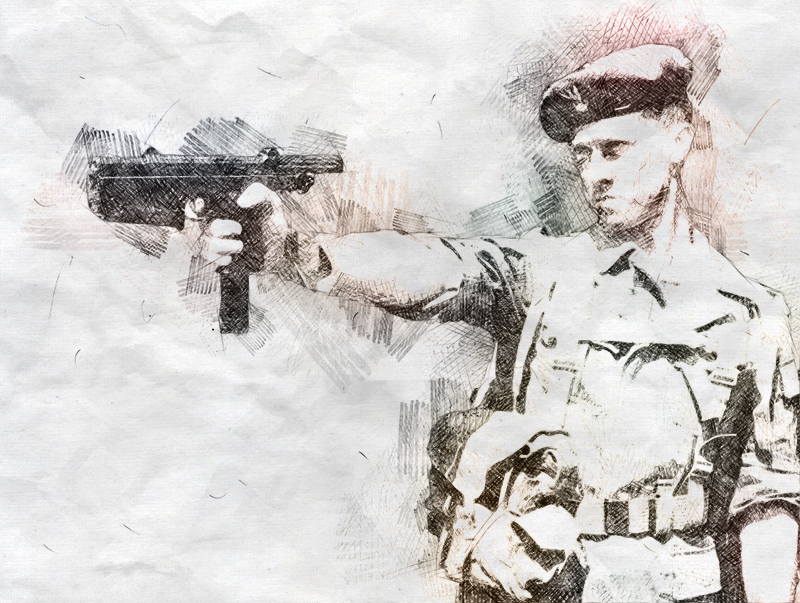
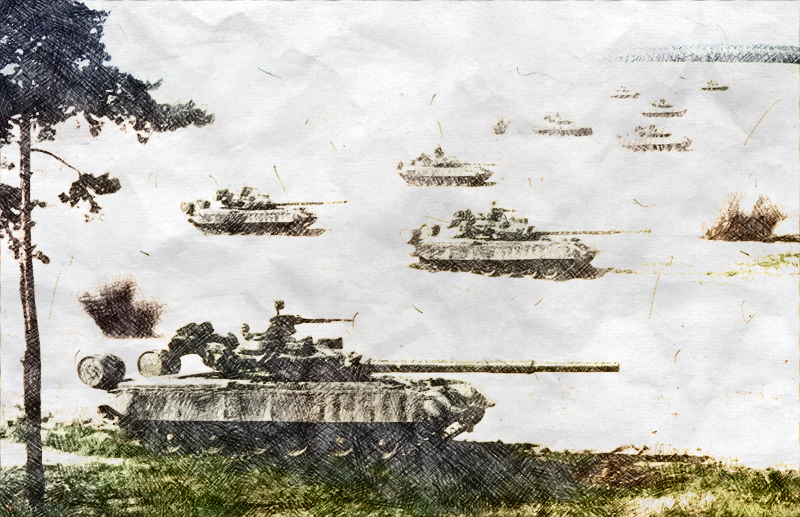
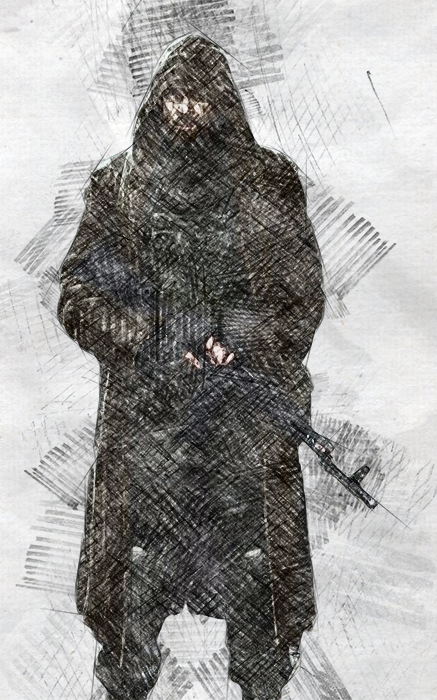
Writing is 90% done! Layout and design coming soon.
Oops, looks like I wandered off course on my travel rules series. In part, because I was… traveling. I suffered one point of damage and two points of stress as a result, but am recovering nicely.
I will get back to that series soon with some further thoughts (and observations based on experimenting in my ongoing game), but for the moment let’s discuss something completely different that has come up on the forums, Reddit, etc: the behavior of NPCs in combat, and some tools for quickly/sensibly adjudicating that.
The basic rules divide what I will simply call “harm” into two basic, but fundamentally different categories: damage, and critical injury. “Damage” here is not exactly HP, but rather a general pool of pain resistance, stamina, etc. Most characters have 4 or 5 damage points . Losing all your damage points is never lethal on its own, although it does usually knock you out of a fight (potentially the same thing, in some circumstances!). With a typical rifle round doing 2 or 3 damage points on a hit, there can be an element of whittling away at the enemy that feels… undramatic.
But! On the other hand, there are critical injuries. Crits are serious, long-term harm inflicted whenever an attack is particularly successful (for some extra-deadly weapons, this is essentially any time they hit — beware sniper rifles and machineguns!!). These range from broken bones to internal bleeding to leaving your brains scattered across the fields of Poland. In general, they are grisly and the kind of thing that might make a reasonable person look at themselves and think “Fuck this shit, I’m out.” And they can happen pretty much at any moment, which goes a long way to restoring the spooky, lethal nature of the system.
The rules put it more succinctly:
Normal damage points represent fatigue, bruises, and flesh wounds — painful, to be sure, but not fatal. Critical injuries represent a much more dangerous form of injury — these can maim or kill you.
Dealing with a mob of NPCs quickly makes it clear that tracking damage points for all of them is both fiddly and tiresome. The game is aware of this, and has a number of optional rules for speeding up play for NPCs in combat. On this topic:
To speed the game up and minimize bookkeeping, the Referee doesn’t need to track damage points on minor NPCs at all. Instead, all hits on such NPCs trigger automatic suppression of the target and all similar NPCs in the same hex (page 67), and all critical hits are instantly incapacitating. There is no need to roll for hit location on minor NPCs unless they are wearing body armor or are behind cover.
That’s good streamlining, with one big issue: it doesn’t account for non-critical hits on NPCs at all! If you don’t track damage for NPCs, all non-critical damage would simply seem to disappear into a void. One commenter even suggested this could make NPCs effectively immortal, which is a silly take (and pretty unlikely to occur in most actual cases, crits are not exactly uncommon in this game) — but if you play strictly RAW using this optional rule, it’s definitely one interpretation.
Here’s another: people generally want to live. Your players will usually (ok, sometimes) take care of this for their PCs. As a GM, it’s your job to take care of this for your NPCs. After all, your whole role is trying to make the world feel believable and alive. Almost no one fights to the last man — especially not among those who have already survived years of nightmarish war. Giving NPCs (even faceless mooks) believable behavior once the bullets start flying is as good a place as any to enforce that. So here’s a couple ways I’ve done it.
Goals and Fighting Spirit
For any group of NPCs, I think both in terms of what their goal is, and how dedicated they are to that goal. From there, it’s easy to determine a break point. If they end up in a shooting fight, it all comes back to the goal.
- A gang of bandits that was just hoping to rob the PCs and be on their way probably doesn’t actually want to be shot today, and might take the first opportunity to flee once it becomes clear they’ve picked on the wrong porcupine.
- A lone scrounger who was trying to pluck the carburetor out of an abandoned tractor probably wants no piece of any fight and will run/hide/give up at the first sign of trouble.
In both of those cases, a shootout is incidental to the goals of the group, and their tolerance for casualties is probably very low. Any individual who is hit might very well call it a day, no matter how minor the wound was (there’s no such thing as a “minor” wound if you lack antiseptics and antibiotics!). The group as a whole is probably not that interested in sticking around if they take a casualty or two.
- On the other hand, two starving brothers using their last energy to steal a pig, so their family can survive just one more week, might have nothing to lose.
- A squad of Soviet soldiers on a mission specifically to hunt the PCs would find a battle against them completely aligned with their goal. Their loss tolerance is going to be higher, maybe as high as 50%. If they take a hit, they have reasonable confidence that one of their comrades is going to patch them up or at least get them out of the shit.
Easy Wound Table
For quickly adjudicating wounds for any NPC, I made the following table, which gives you actionable results with a single roll (ok, ok, it’s a couple of rolls if you need to roll for hit locations or armor, but still):

It’s pretty self-explanatory, I think. I do not use this as a player-facing tool, BTW… I tell the characters only what they could reasonably observe. If you drop a guy in the wheat fields 200m away, who knows. He might be dead. He might be unconscious. He might be crawling away, or simply laying in wait. Go find out, if it’s important to you…
In my limited testing, this table tends to give fairly believable results, I think. You’ll get the odd super-soldier who takes several bullets and keeps on coming. You’ll get just as many scared, self-interested marauders who decide discretion is the better part of valor after losing a chunk of arm to a stray round. And just as vitally to many campaigns, after the battle is over, you’ll get a mix of NPCs who are outright dead along with those who will bleed out within minutes, those who need medical attention but within a few hours, and so on. This presents ethical dilemmas as well as practical ones to your characters who may want to question these NPCs. Who knows? The way they treat the fallen may become known in this area…
If you need to know specifically what happened to the NPC later on, just go ahead and roll on the normal hit location or crit tables then. The point of this tool is to speed up combat in the moment, and part of that is offloading time-consuming rolls and recordkeeping to later on.
One suggestion was to combine the Coolness Under Fire roll into this table or some of its results. I personally haven’t felt the need to do so, but it could be easily done. The most obvious thing is that any crit at all should probably automatically be treated as a failed CUF check.
If you want tougher NPCs, you could do something as simple as subtracting 1 from every roll on these tables. Note that the table is used with damage after armor is taken into account, however, so simply giving your NPCs body armor does still matter.
In the last post we reviewed some basic real-world data for soldiers marching from one hellscape to another. Now we can start identifying problems with how this is represented in-game in Twilight, and then how to fix it.
Show Me What You’re Workin’ With
Twilight: 2000 4th Edition breaks down time into “shifts” of about 6 hours. So, you’ve got 4 shifts in a day, and during those shifts you can do things like march, hunt, scrounge, etc. That’s fine. I do have a few practical problems with it after running it for a while, and noticing that all of our worst sessions are ones that involve actually tracking shifts at all… but for now I digress. The game also provides nice, visually pleasing hex maps of most of Poland (and Sweden), with each hex 10km in scale.
Under good circumstances, you can march two hexes per shift on a road or in open terrain. Off-road or in any terrain type except open, you can march one hex per shift.
On a road, we can march 2 hexes per shift. That’s 20km. 20km divided by the 6 hours in a shift is a little more than 3kph. If we assume that we are taking reasonable rest halts, and probably not actually marching for at least an hour of that six hours, that math works out pretty close to what the DoD tells us. What else do the rules say? Off-road, we make half that speed, or about 1.7 kph. That’s admirably close to our real-world numbers, so I can’t fault anyone here so far!
The rules allow us to march up to two shifts per day without issue. So that’s 40km. Now, it’s 40km on a hex-map. That is, straight lines that are as efficient as hexes can possibly be. In the real-world, that road you’re marching on might take some significant detours along its route, but there’s just not fidelity here to manage it.
Already we’re bumping into a problem that I have found recurring over and over through this system: 10km is just an awfully big space. Bumping the scale to 5km hexes would immediately resolve a lot of wackiness that follows. Several times now I’ve come thiiiiiis close to making that 5km map to just be done with it. But that’s a huge PITA, so I haven’t. But I might! Or I might not. The tension.
 This is a pleasantly designed map, except that it also omits a ton of pretty relevant detail
This is a pleasantly designed map, except that it also omits a ton of pretty relevant detail
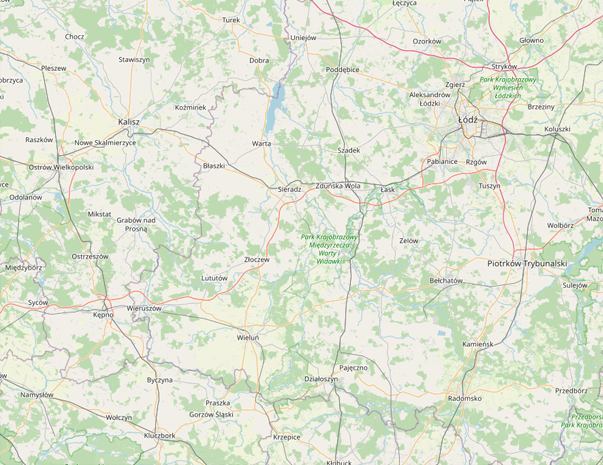 and this is what the same area really looks like with the abstraction removed. Not even visible here is the fact that roughly every single kilometer of this area you will find some farmstead or village or industrial plant or all of the above!
and this is what the same area really looks like with the abstraction removed. Not even visible here is the fact that roughly every single kilometer of this area you will find some farmstead or village or industrial plant or all of the above!
… obviously some abstraction is needed in gaming. But I fear this map teaches a lot of very incorrect ground-level truths about the nature of the area that we are supposed to be vividly describing! I certainly was shocked as I learned a lot of this myself.
Anyway. We can march for two shifts and the game says that’s cool. Since we have 6 hour shifts, that’s 12 hours of the day spent on pretty much nothing else. The book says 8 hours, so now again thanks to fidelity mismatch we’ve lost 4 hours more or less. The game allows us to do quick little side activities during a shift (I usually assume my players are doing smart, capable survivor type things like cleaning their guns, rather than play gotcha with the weapon maintenance rules, for instance…) but 4 hours is a good chunk of time! That’s enough to conceivably do a quick scrounging mission, or some fishing, or… alas, game says no.
Now if we’ve really got to get somewhere, we can do a Forced March.
If you need to, you can push yourselves and march for a third shift in a single day. This requires that you each make a STAMINA roll (in addition to any roll for heavy rain). Failure means that you are unable to march during the shift — instead, you must rest or sleep.
If you are in a real rush, you can even attempt to march for a fourth shift in the day. In that case you must roll for STAMINA again as outlined above, but the roll gets a -2 modifier. Be aware that doing this automatically makes you sleep deprived, as you miss the necessary hours of sleep in the day.
The options of what can happen here are:
- you succeed and get to march your extra 10km
- you fail, give up, and go to sleep
- you fail, push your roll, and either succeed or fail (in which case you might take 1 or 2 points of damage in the process of either going somewhere, or going nowhere)
It’s a binary state involving crossing a pretty significant amount of distance. I don’t really love that. I do appreciate that there’s a meaningful choice involved with the push-your-roll system, but I’m starting to think more could be done there. For one thing, since the failure state is that you must rest or sleep, a point of damage is often a moot point (haaaa) - since it heals immediately as you rest! And by the book, a very rare two points of damage is pretty much the worst/only complication you can receive from this whole situation.
Whether or not to push these rolls, and whether to proceed on or off-road are about the only significant choices players get. I’d like to see more there.
There are fairly similar rules for driving vehicles, but I’m not concerned with the affairs of the rich and powerful right now. Let’s get our muddy boots right, first.
Goals
Having figured out what we’re up against, it’s time to outline some goals
- make travel have more interesting/difficult choices whenever it happens
- make travel more punishing and the world both more alive and more threatening
- allow a little more fidelity in outcomes
- ideally, move away from or minimize reliance on the shift system in general!
That seems like a good start. Next up I’m going to hack myself into a corner before abandoning this little project forever!
I’ve been running a campaign in the Free League 4th Edition of Twilight: 2000 for a few months now. There’s a lot to like in this system. There’s also a set of rules for wilderness travel. That’s an unfair attack… the fact is I haven’t really found a hex-crawl system that seems like more than a distracting pain in the ass after a short period of time. In this case, about four sessions in, I was already pretty dissatisfied with it. It’s not bad exactly but it is… a hex-crawl system. With all the usual flaws: lack of meaningful choices, accounting for what every character is doing all the time. Maybe there’s people who really like that and I’m just not a Hex-Crawl Guy. Maybe. But to me it gets very rote and repetitive and, what’s worse, it absolutely distracts players, GM — err sorry, “Referee” — from whatever story, clues, etc were actually happening!
So, a few readings of AngryGM and a long series of YouTube watch-next recommends, I’m back with renewed confidence that I’m not crazy and furthermore, that this can be improved on. I’m going to be working on that sort of in real-time here, post by post.
Doing the Research
Let’s start with fundamentals. T2K is a “realistic” military game so let’s make sure we’ve got our facts right. Luckily the DoD has done a lot of work for us.
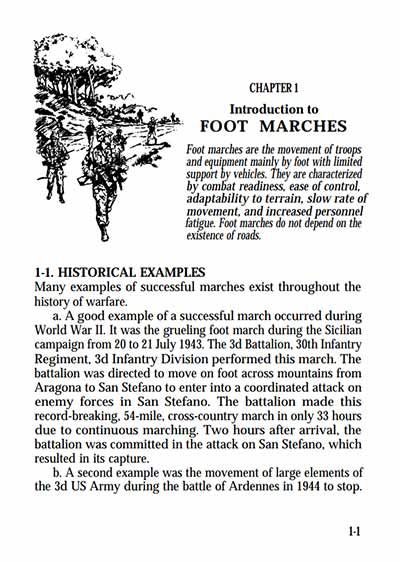
FM 21-18 to the rescue! Let’s use the 1990 edition for a start.
Now, this document is mostly dedicated to what it takes to march a whole battalion or brigade or company without losing your weapons platoon or getting run over by opposing traffic and so on. A lot of it isn’t super relevant to our group of 4 or 5 intrepid post-apocalyptic wanderers (although it’s probably all knowledge and experiences they might have had!). But it does give us some good numbers to work from and is full of tactical considerations… ie, choices!
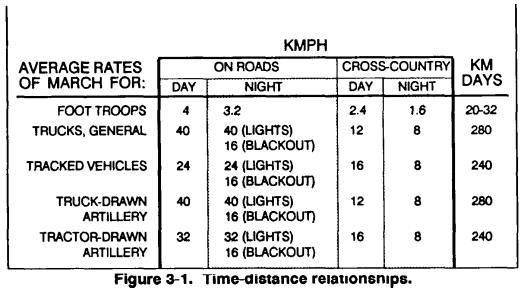
4 kph on foot by road in the day.
3.2 kph on road in bad visibility (including night)
2.4 kph cross-country by day.
1.6 kph cross-country in bad vis.
Cool.
We’ve got plenty of other useful tidbits in here, like expecting a rest halt for 10-15 minutes per hour during the march, expecting an 8-hour marching day (32km on-road), max recommended forced march distances, and more. Again, these numbers assume you and your closest 100+ armed friends, so a little variance can be expected when You’re On Your Own.
Regardless, we’ve got a verifiable baseline to work from now and can start getting to work.
A blog? OK.
Find myself needing a more structured place than Discord and forums to work out some ideas, mostly TTRPG house rules and hacks and supplements. For now, mostly focused on Mothership, Twilight: 2000, then who knows.
So, that’s what’s gonna go here. BRB, off to find one of those 1995 Geocities Under Construction gifs.




 This is a pleasantly designed map, except that it also omits a ton of pretty relevant detail
This is a pleasantly designed map, except that it also omits a ton of pretty relevant detail and this is what the same area really looks like with the abstraction removed. Not even visible here is the fact that roughly every single kilometer of this area you will find some farmstead or village or industrial plant or all of the above!
and this is what the same area really looks like with the abstraction removed. Not even visible here is the fact that roughly every single kilometer of this area you will find some farmstead or village or industrial plant or all of the above!
